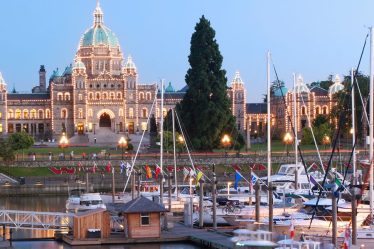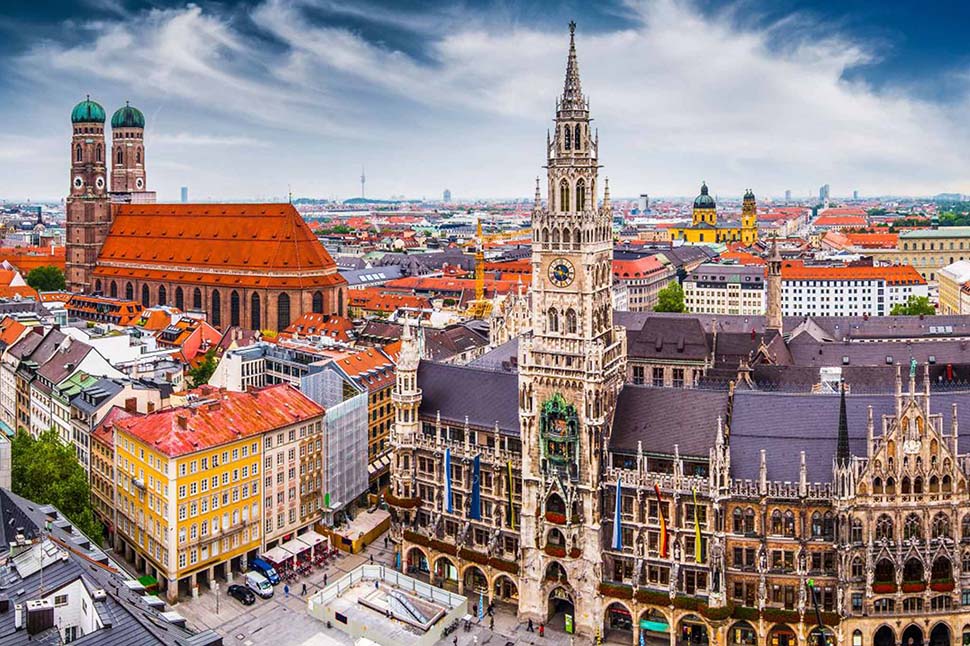
Munich, the vibrant capital of Bavaria in Germany, is a city rich in history, culture, and architectural beauty. From its royal palaces and historic churches to its world-famous beer gardens and museums, Munich offers an abundance of landmarks that cater to a variety of interests.
In this guide, I will take you through the city’s best landmarks, providing a detailed exploration of each site, its historical significance, and tips for visiting. Whether you’re a first-time visitor or a seasoned traveler, this guide will help you discover the best of what Munich has to offer.
1. Marienplatz
Marienplatz, the heart of Munich, has been the city’s main square since 1158. It is surrounded by historic buildings, shops, and restaurants, making it a bustling hub of activity. The square is named after the Marian column, which was erected in 1638 to celebrate the end of Swedish occupation.
Historical Significance
Marienplatz has been the focal point of Munich’s social and political life for centuries. It was the site of medieval markets and tournaments and remains a central meeting place for locals and tourists alike. The square is home to the New Town Hall (Neues Rathaus) and the Old Town Hall (Altes Rathaus), both of which are architectural masterpieces.
Key Attractions
- New Town Hall (Neues Rathaus): This neo-Gothic building, constructed between 1867 and 1908, is renowned for its stunning facade and the Glockenspiel, which chimes daily at 11 am and 12 pm (and 5 pm in summer). The Glockenspiel reenacts two historical events with 32 life-sized figures and 43 bells.
- Old Town Hall (Altes Rathaus): Originally built in the 14th century, this Gothic building has been rebuilt and restored several times. It now houses a toy museum showcasing toys from different eras.
- Marian Column: The centerpiece of Marienplatz, this column features a golden statue of the Virgin Mary standing atop a tall marble pillar, surrounded by four cherubs representing the city’s victory over war, pestilence, hunger, and heresy.
Tips for Visiting
- Arrive early to avoid crowds, especially during the summer and festive seasons.
- Take a guided tour to learn more about the history and architecture of the buildings.
- Climb the tower of the New Town Hall for a panoramic view of the city.
2. Nymphenburg Palace
Nymphenburg Palace, located in the western part of Munich, is one of the largest royal palaces in Europe. The palace was the summer residence of the Bavarian monarchs and is surrounded by an expansive park with fountains, pavilions, and a canal.
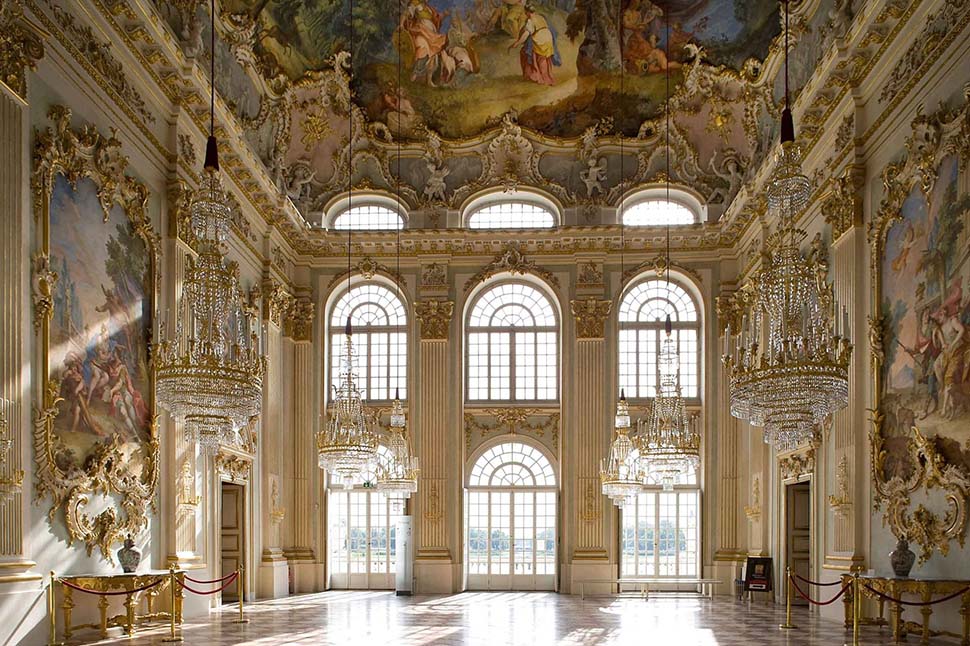
Historical Significance
Construction of Nymphenburg Palace began in 1664 to celebrate the birth of Max Emanuel, the long-awaited heir to the Bavarian throne. Over the centuries, the palace was expanded and embellished, reflecting the tastes and influences of different eras.
Key Attractions
- The Palace Building: The central part of the palace features the stunning Stone Hall (Steinerner Saal), a grand ballroom with ceiling frescoes by Johann Baptist Zimmermann, and the Gallery of Beauties, commissioned by King Ludwig I.
- The Park: Spanning over 200 hectares, the park is a masterpiece of landscape design, with formal gardens, lakes, and hidden pavilions like the Amalienburg, a rococo hunting lodge, and the Pagodenburg, a small pavilion inspired by Chinese architecture.
- Marstallmuseum: Located in the former stables, this museum displays an impressive collection of royal carriages, sleighs, and equestrian equipment.
Tips for Visiting
- Allocate at least half a day to explore the palace and its grounds.
- Rent a bike or take a horse-drawn carriage ride through the park for a unique experience.
- Visit the palace in spring or summer when the gardens are in full bloom.
3. English Garden
The English Garden (Englischer Garten) is one of the largest urban parks in the world, covering an area of 910 acres. It stretches from the city center to the northeastern city limits and offers a tranquil retreat with lush greenery, winding paths, and picturesque water features.
Historical Significance
The park was created in 1789 by Sir Benjamin Thompson, later known as Count Rumford, who designed it as a public park for the enjoyment and well-being of Munich’s citizens. It was one of the first public parks in Europe, predating even the famous Central Park in New York City.
Key Attractions
- Chinese Tower (Chinesischer Turm): This 25-meter-high wooden pagoda is a popular beer garden, where you can enjoy traditional Bavarian beer and food. It often hosts live brass band performances.
- Monopteros: A Greek-style temple offering panoramic views of the park and the Munich skyline. It’s a great spot for photos, especially at sunset.
- Surfing at the Eisbach: One of the park’s most unique attractions is the standing wave on the Eisbach River, where surfers can be seen riding the wave year-round, regardless of the weather.
- Kleinhesseloher See: A serene lake with rowboats for rent. It’s a perfect spot for a leisurely boat ride or a picnic by the water.
Tips for Visiting
- Spend a full day exploring the park’s many trails, gardens, and attractions.
- Rent a bike to cover more ground and discover hidden corners of the park.
- Bring a picnic or enjoy a meal at one of the park’s beer gardens.
4. Munich Residenz
The Munich Residenz, located in the heart of the city, was the former royal palace of the Wittelsbach monarchs of Bavaria. It is the largest city palace in Germany and now serves as a museum showcasing the opulent lifestyle of the Bavarian rulers.
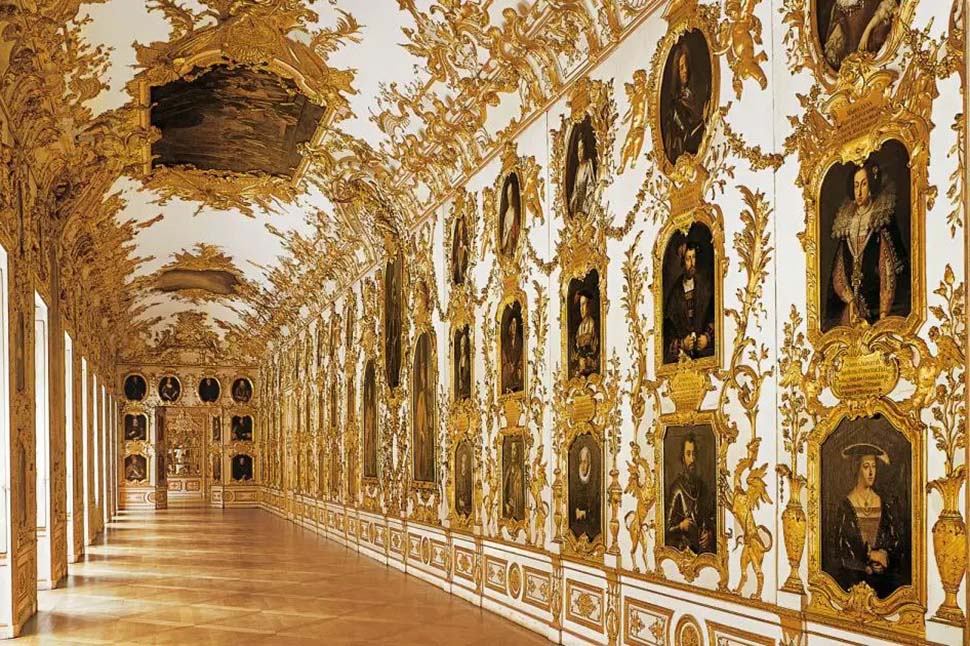
Historical Significance
The Residenz was originally a small castle built in 1385 and expanded over the centuries into a vast complex with ten courtyards and 130 rooms. It reflects a mix of architectural styles, from Renaissance and Baroque to Rococo and Neoclassicism.
Key Attractions
- Antiquarium: The largest Renaissance hall north of the Alps, decorated with statues, frescoes, and stucco work. It was originally used as a banquet hall and now displays a collection of classical antiquities.
- Treasury: A collection of royal regalia, including crowns, swords, and precious jewels. Highlights include the Bavarian crown jewels and the legendary statuette of St. George.
- Cuvilliés Theatre: An exquisite Rococo theatre within the Residenz, known for its gilded decorations and ornate balconies. It hosts classical music performances and operas.
- Royal Apartments: Lavishly decorated rooms that offer a glimpse into the royal lifestyle, featuring tapestries, chandeliers, and period furniture.
Tips for Visiting
- Allow at least three hours to explore the extensive museum and its exhibits.
- Consider purchasing a combination ticket that includes entry to the Treasury and Cuvilliés Theatre.
- Join a guided tour to gain deeper insights into the history and art of the palace.
5. Viktualienmarkt
Viktualienmarkt is Munich’s largest and most famous open-air market, located just a few minutes’ walk from Marienplatz. It offers a vibrant atmosphere with a wide array of fresh produce, gourmet foods, flowers, and Bavarian specialties.
Historical Significance
The market dates back to 1807 when King Maximilian I moved the city’s main market from Marienplatz to its current location to accommodate its growing size. Over the years, it has evolved into a culinary paradise and a beloved local institution.
Key Attractions
- Market Stalls: With over 140 stalls, the market offers everything from fresh fruits and vegetables to exotic spices, cheese, meat, and seafood. It’s a food lover’s dream.
- Beer Garden: Located in the center of the market, this traditional beer garden is a great place to relax with a cold beer and a hearty Bavarian meal. It’s especially lively during lunch hours.
- Maypole: A tall, colorful maypole stands in the market, decorated with traditional Bavarian symbols and figures. It’s a popular spot for photos.
- Seasonal Events: The market hosts various festivals and events throughout the year, including the famous Starkbierfest (Strong Beer Festival) and the Viktualienmarkt Christmas market.
Tips for Visiting
- Visit in the morning to experience the market at its liveliest and enjoy the freshest produce.
- Try local delicacies like Weisswurst (white sausage), Leberkäse (meatloaf), and freshly baked pretzels.
- Bring cash, as some vendors may not accept credit cards.
6. Deutsches Museum
The Deutsches Museum, located on Museum Island in the Isar River, is one of the world’s largest and most significant museums of science and technology. It boasts an extensive collection of exhibits covering a wide range of scientific disciplines.

Historical Significance
Founded in 1903 by engineer Oskar von Miller, the museum aims to make science and technology accessible to the general public. It has grown over the decades to become a premier institution for scientific education and research.
Key Attractions
- Aviation and Space Travel: This exhibit features historic aircraft, rockets, and spacecraft, including an original V2 rocket and a replica of the lunar module.
- Energy Technology: Explore the history and development of various energy sources, from steam engines to modern renewable energy technologies.
- Astronomy: The museum’s observatory and planetarium offer fascinating insights into the cosmos, with interactive exhibits and live demonstrations.
- **
Marine Navigation:** Discover the evolution of maritime technology, with models of ships, navigation instruments, and an actual U-boat on display.
Tips for Visiting
- Allocate a full day to explore the museum’s extensive exhibits and interactive displays.
- Take advantage of guided tours and live demonstrations to enhance your understanding of complex topics.
- Check the museum’s website for information on temporary exhibits and special events.
7. BMW Welt and Museum
BMW Welt (BMW World) and the adjacent BMW Museum are must-visit attractions for automobile enthusiasts. Located near the Olympic Park, these sites offer a comprehensive look at the history, innovation, and future of the BMW brand.
Historical Significance
The BMW Museum opened in 1973, showcasing the company’s rich heritage and technological advancements. BMW Welt, opened in 2007, serves as a delivery center, exhibition space, and event venue, highlighting BMW’s commitment to cutting-edge design and sustainability.
Key Attractions
- BMW Welt: An architectural marvel with its futuristic design, BMW Welt features interactive exhibits, concept cars, and the latest BMW models. Visitors can also watch live vehicle deliveries.
- BMW Museum: The museum’s permanent exhibition covers the history of BMW, with classic cars, motorcycles, engines, and design studies. Highlights include the iconic BMW 328, the legendary BMW M1, and rare prototypes.
- Test Drives: Visitors have the opportunity to book a test drive in a BMW, MINI, or Rolls-Royce vehicle, offering a hands-on experience of the brand’s performance and luxury.
Tips for Visiting
- Plan to spend at least half a day exploring BMW Welt and the museum.
- Book a guided tour to gain in-depth knowledge about BMW’s history and technological innovations.
- Enjoy a meal or snack at one of the on-site restaurants or cafes.
8. Asam Church
The Asam Church (Asamkirche), officially known as St. Johann Nepomuk, is a small yet richly decorated Baroque church located in the Sendlinger Straße. Built by the Asam brothers in the 18th century, it is considered one of Munich’s most beautiful churches.
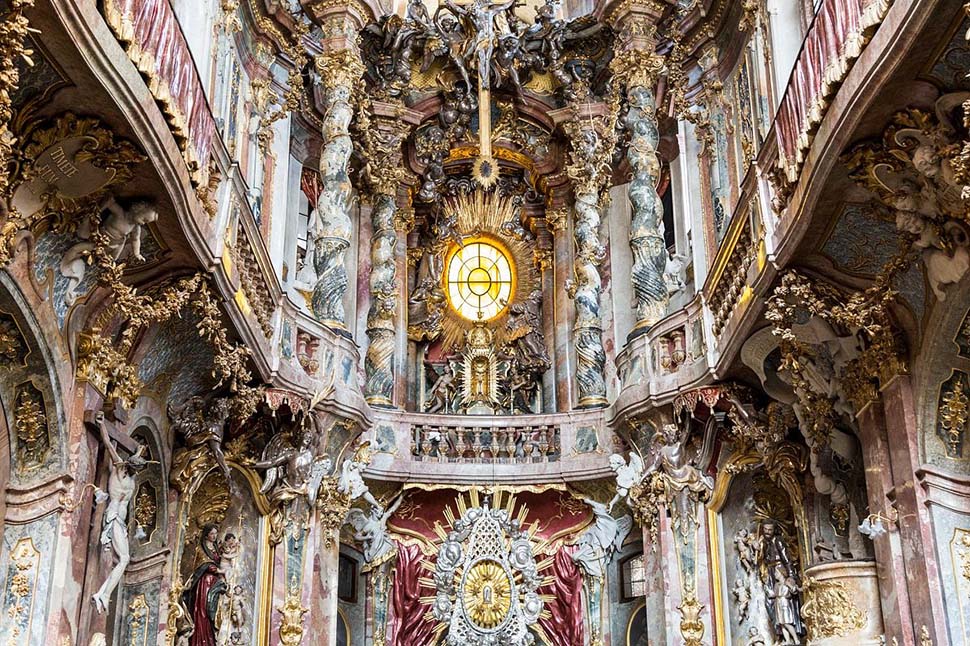
Historical Significance
The Asam Church was constructed between 1733 and 1746 by the renowned artists and architects Cosmas Damian Asam and Egid Quirin Asam as a private chapel. It showcases their artistic talents and serves as a masterpiece of Bavarian Rococo architecture.
Key Attractions
- Interior Decoration: The church’s interior is a visual feast, with elaborate frescoes, stucco work, and gilded sculptures. The ceiling fresco depicts the life of St. Johann Nepomuk, and the high altar features a statue of the saint.
- Illusionistic Art: The Asam brothers used innovative techniques to create the illusion of greater space within the small church. The intricate details and artistic tricks make it a fascinating study of Baroque art.
- Ornate Facade: The exterior of the church is equally impressive, with a beautifully decorated facade that features statues, reliefs, and a richly ornamented portal.
Tips for Visiting
- The church is small, so visit during off-peak hours to avoid crowds.
- Spend time admiring the details of the interior artwork and architecture.
- Combine your visit with a stroll through the nearby Sendlinger Tor district, known for its charming streets and boutique shops.
9. Allianz Arena
The Allianz Arena, located in the northern district of Fröttmaning, is one of the most modern and iconic football stadiums in the world. Home to FC Bayern Munich, it is renowned for its unique design and state-of-the-art facilities.
Historical Significance
Opened in 2005, the Allianz Arena was designed by Swiss architects Herzog & de Meuron. It has hosted numerous major football events, including the 2006 FIFA World Cup and the UEFA Champions League final.
Key Attractions
- Stadium Tours: Guided tours offer behind-the-scenes access to areas such as the players’ tunnel, dressing rooms, and press conference area. You’ll also learn about the stadium’s architecture and history.
- FC Bayern Museum: Located within the stadium, the museum showcases the history and achievements of FC Bayern Munich, with trophies, memorabilia, and interactive exhibits.
- Illuminated Facade: The stadium’s exterior is covered in inflated ETFE plastic panels that can be lit in various colors. The sight of the arena glowing in red, blue, or white is a stunning visual experience.
Tips for Visiting
- Check the schedule for match days and special events, as tours may be limited.
- Visit the FC Bayern Museum to learn more about the club’s illustrious history.
- Arrive in the evening to see the illuminated facade in its full glory.
10. Frauenkirche
The Frauenkirche, or Cathedral of Our Lady, is one of Munich’s most recognizable landmarks. Its twin onion-domed towers dominate the city skyline and serve as a symbol of Munich.
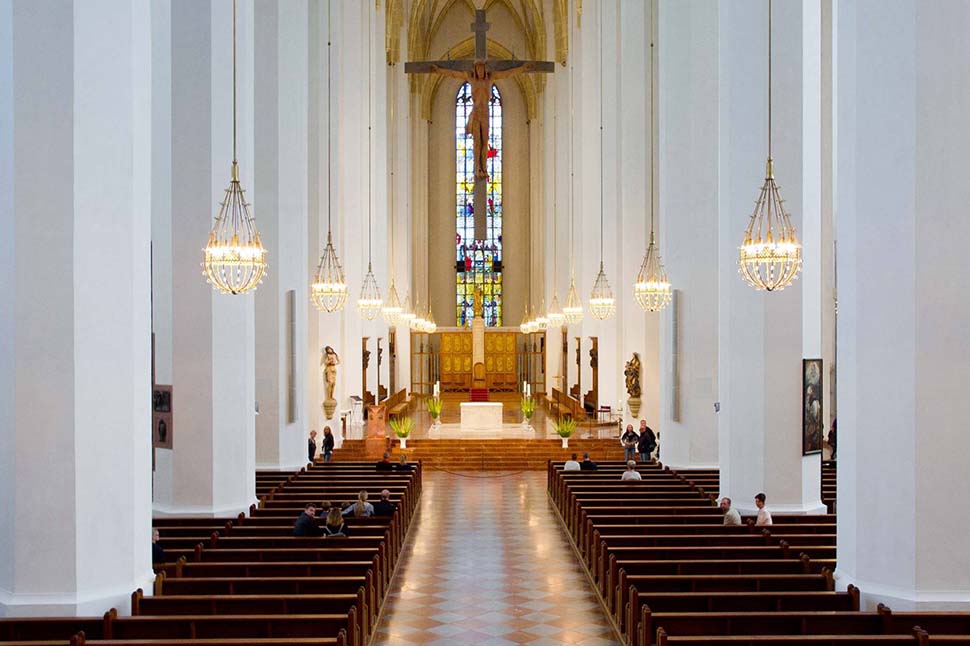
Historical Significance
The Frauenkirche was built between 1468 and 1488 in a late Gothic style. It has played a central role in Munich’s religious and cultural life for centuries and is the seat of the Archbishop of Munich and Freising.
Key Attractions
- Interior: The cathedral’s interior is spacious and elegant, with high vaulted ceilings and beautiful stained glass windows. Notable features include the tomb of Emperor Ludwig IV and the Teufelstritt (Devil’s Footstep) footprint in the entrance hall.
- Towers: Visitors can climb to the top of the south tower for panoramic views of Munich and the surrounding Alps. On clear days, the view is breathtaking.
- Altarpiece: The high altar features a magnificent altarpiece by Jan Polack, depicting the Assumption of the Virgin Mary.
Tips for Visiting
- Attend a church service or concert to experience the cathedral’s acoustics and spiritual atmosphere.
- Visit in the early morning or late afternoon to avoid the busiest times.
- Take time to explore the nearby Marienplatz and its surrounding attractions.
Munich is a city that effortlessly blends its rich historical heritage with modernity, offering visitors a diverse range of landmarks and experiences. From the bustling heart of Marienplatz to the serene beauty of the English Garden, each landmark tells a story of the city’s past and present.
Whether you’re marveling at the opulence of Nymphenburg Palace, enjoying a meal at Viktualienmarkt, or exploring the innovative exhibits at the Deutsches Museum, Munich promises a memorable and enriching journey.


